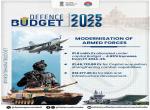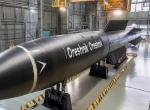It certainly cannot be the cooler days in Delhi that has attracted, in recent weeks, so many concerned western ‘experts’ to the capital, to discuss the abstruse-to the Indian public-subject of “strategic stability” in Asia/ in the sub-continent. Ahmed Rashid, the celebrity commentator on the Af-Pak region, has recently written in the Financial Times that they-the West-should “Beware Pakistan’s small nuclear weapons” and this kind of reporting perhaps is causing some of the excitement. Add to this the fact that apart from an unflurried response from a semi-official source, there has been no other official reaction from India, which should have been the most worried, and the concern of these ‘experts’ is not surprising.
It is public knowledge that since April 2011, Pakistan has conducted three tests of its Hatf-IX (NASR) missile, the latest in February of this year. The Pakistani Army has, after each launch, stated in press statements, that the “missile has been developed to add deterrence value to Pakistan’s Strategic Weapons Development Programme at shorter ranges” and that the 60km NASR “carries a nuclear warhead of appropriate yield with high accuracy, shoot and scoot attributes.” The introduction of battlefield nuclear weapons for use as a deterrent to conventional land based troops has been seen and reported as a reaction to the Indian Army’s doctrine of Cold Start which in turn was drawn up as a possible response to another Mumbai-like terrorist attack. Apart from this widely reported conclusion, it appears clear that the effort behind this development is to signal to both India and to the international community, Pakistan’s willingness to escalate any move by the Indian Army against it to a nuclear level.
Indeed, the Indian strategic community has been discussing the implications of Pakistan’s move for some time-a comprehensive analysis available in the public domain is the one by the International Strategic and Security Studies Programme (ISSSP) of the National Institute of Advanced Studies. At the semi- official level, Ambassador Shyam Saran, Chairman of the National Security Advisory Board pointed out that India’s nuclear doctrine made no difference in the categorisation of nuclear weapons. Any nuclear attack on India or on her troops anywhere would be responded to by the inflicting of ‘unacceptable damage’.
Lest the signal be lost on the international community, Rashid’s article refers, almost with relish, to Pakistan’s growing nuclear arsenal and that “Pakistan has one of the fastest growing battlefield or tactical weapons programmes in the world “and claims that Pakistan has developed the capacity to miniaturise nuclear weapons “very successfully”. Pointing to the dangers of another terrorist attack like the one on Mumbai in 2008, he appeals to the West (the US?) to translate its concern about Pakistan’s tactical nuclear weapons “into a larger deal that pushes both Islamabad and New Delhi to contain what is now a runaway bomb.” The logic is truly bizarre: Pakistan makes these terrorists and these weapons and India should be restrained?
This logic, however, seems to be finding some support among the ‘western experts’. At a recent meeting in Delhi, George Perkovich presented what he felt were five options before India in the event of a Mumbai-like attack by terrorists from Pakistan. Perkovich works on the basis of assumptions and presumptions which reveal that in spite of having written reams about India and her nuclear programme, his understanding of Indian decision making seems to be based on current media reports. He remains deeply doubtful of Indian capabilities –not just military but intelligence in both senses, and resources. (He apparently presumes that Pakistan would have the capability and resources even though they have never won a war and are making a very good try at ruining their economy.) He assumes, for example that the Cold Start doctrine would include occupying some Pakistani territory by the Indian Army-and on that ground alone, he finds this option flawed, quite apart from provoking Pakistan to use its tactical nuclear weapons. Air strikes are ruled out as Indian capabilities coupled with possible collateral damage and adverse media coverage should dissuade India(presuming, of course, that ‘Mumbai-II’ would not have had either collateral damage or negative press coverage) not to mention the likelihood of Pakistani reaction with its tactical nuclear weapons, and pulling China into the equation. Fomenting insurgency is immoral and illegal and should be eschewed; developing tactical nuclear weapons by India would require further testing and would cost- he is silent on whether this would apply to Pakistan or not. The ISSSP study referred to above makes the point that Pakistan would need to test the miniaturization of its weapons to be usable by NASR-on technical grounds. The most egregious argument is Perkovich’s quotation of Shyam Saran’s speech, so partially, that the sense of that sentence has been changed to meet his needs rather than Saran’s clear intention. There has been discussion at home about the issue of ‘credibility’ of a ‘massive response’; while more precision might have been helpful, ‘massive’ surely includes ‘punitive’, and the effects could be ‘massive’ not just the attack. What is clear is that the response would inflict ‘unacceptable damage’.
The option preferred by Perkovich-and no doubt others of the so-called ‘non proliferation brotherhood’, is that India should use “competitive restraint or non-violent leverage” “hold fire and mobilize Pakistani society and international organizations”! In fact, he admits that a ‘normal’ country would meet violence with violence; in his view India should not behave normally.
There are several other organizations which are due to hold meetings in Delhi and elsewhere on the need for ‘stability’ in the region. While this is a perfectly legitimate activity, their concerns, and they are perhaps valid ones, should surely be addressed to Pakistan, which has nurtured terrorists and is signalling the use of nuclear weapons on the battlefield. Efforts should concentrate on finding ways to persuade Pakistan to desist from what are obviously suicidal attempts.
On the other hand, there is a need for our own Government to let the country-and the world-know how it reacts to recent developments affecting our nuclear posture. I am not referring only to the issue of the introduction of tactical nuclear weapons in Pakistan’s arsenal. Few of these could have been foreseen in 2003 when the doctrine was adopted by the Cabinet. This does not or need not entail any change in the doctrine: what is needed is an indication of policy changes to meet the current challenges.
(The author is a former Indian diplomat. She headed the Indian delegation that participated in the Comprehensive Nuclear-Test-Ban Treaty (CTBT) negotiations at the Conference on Disarmament in Geneva in 1996)
Published Date: 28th November 2013, Image source: http://www.defencetalk.com









Post new comment